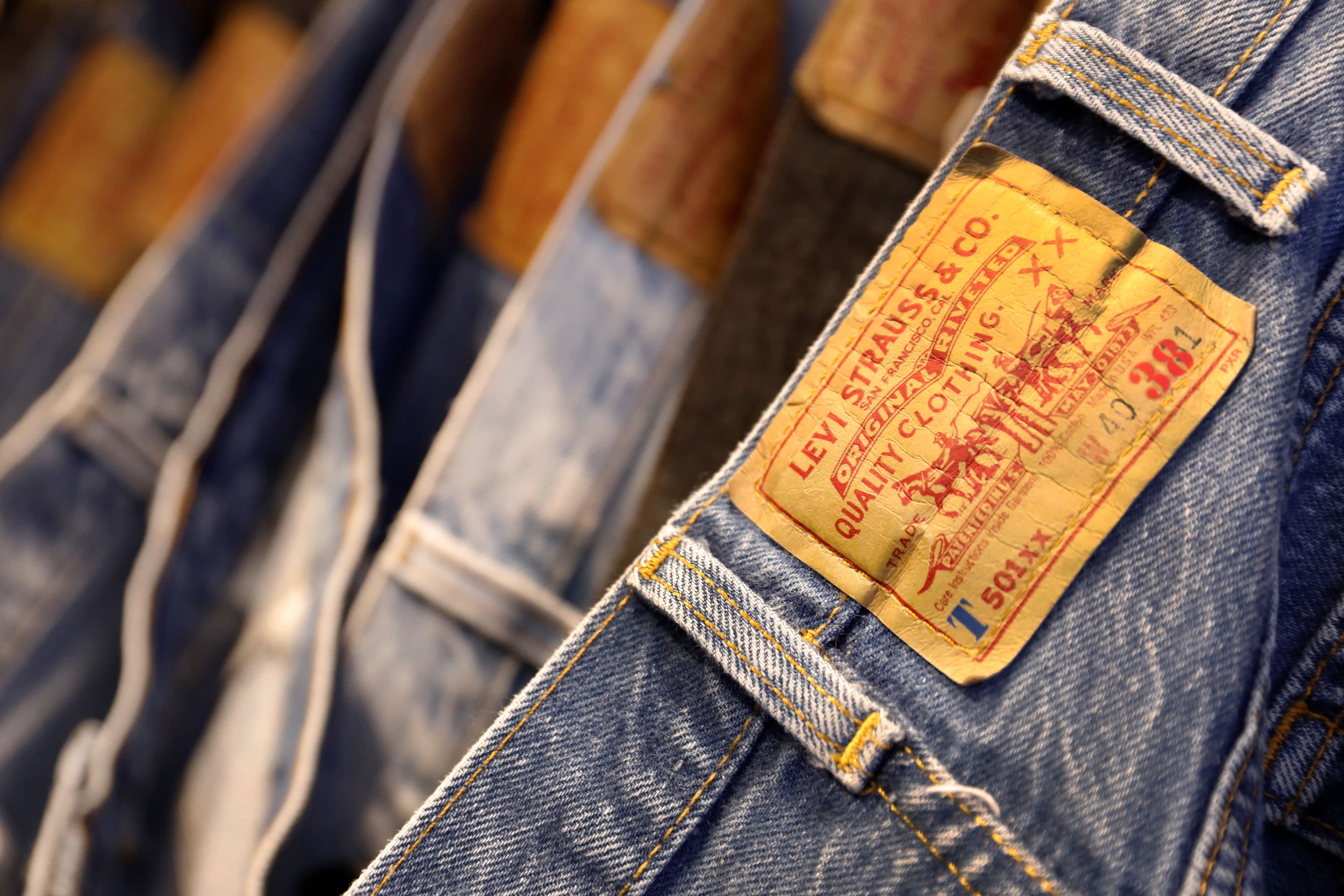Levi Strauss & Co. on Wednesday reported fiscal third-quarter earnings and sales that topped analysts’ expectations, as consumer demand picked up during the back-to-school season and shoppers looked to stock up on the latest denim trends.
Its stock rose more than 2% in extended trading on the news, having closed the day down more than 5%.
Although many apparel companies have been hit by global supply chain bottlenecks, Levi has fared well comparatively due to its diversified manufacturing. Less than 4% of its global volume comes from Vietnam, the company said. Production facilities there have been hard hit by periodic shutdowns during the pandemic.
“Our supply chain really is a source of competitive advantage,” Chief Executive Chip Bergh told CNBC. “We can move product around with a lot of agility. … We’ve been running the business against different scenarios for the last 18 months.”
Here’s how the company did in the three-month period ended Aug. 29 compared with what Wall Street was expecting, based on a survey of analysts by Refinitiv:
- Earnings per share: 48 cents adjusted vs. 37 cents expected
- Revenue: $1.5 billion vs. $1.48 billion expected
Net income rose to $193 million, or 47 cents per share, from $27 million, or 7 cents a share, a year earlier. Excluding one-time items, the company earned 48 cents per share. Analysts had expected profits of 37 cents per share.
Revenue rose 41% to $1.5 billion from $1.06 billion a year earlier. That slightly topped estimates of $1.48 billion.
Bergh said Levi took a roughly $10 million hit to its revenue due to supply chain issues.
Wholesale revenue grew 45% year over year, driven by strong demand in the U.S. and Europe, the company said. Direct-to-consumer sales rose 34% from 2020 levels, and climbed 3% on a two-year basis, as more shoppers visited Levi’s own brick-and-mortar stores for denim and lounge wear.
Digital transactions were up 10% year over year and up 76% on a two-year basis. They accounted for about 20% of Levi’s total sales.
The company noted that its earnings benefited from Levi selling more items directly to consumers and at fuller price points, rather than using promotions.
The lingering health crisis is still shuttering stores around the world. Levi said roughly 10% of its company-operated stores were closed during the latest quarter, primarily in Asia. Roughly 4% remain shut, it said.
For its fourth quarter, Levi is expecting year-over-year revenue growth of 20% to 21%, while analysts had been calling for a 22% increase. The company cautioned its outlook assumes the health crisis doesn’t dramatically worsen.
It sees fourth-quarter earnings ranging between 38 cents and 40 cents per share, on an adjusted basis. Analysts had been looking for an adjusted, per-share profit of 40 cents.
For the full year, Levi sees adjusted earnings in the range of $1.43 to $1.45 per share, ahead of Wall Street’s consensus estimate of $1.33 per share.
“Our expectation is that holiday is going to be pretty good,” Bergh said. “We’re chasing demand right now, from a supply chain standpoint, to make sure that everybody can put Levi under their Christmas tree.”
The company also said Wednesday that its board approved a new $200 million share buyback program during the latest quarter.
Levi shares are up about 21% year to date, putting its market value of $9.76 billion.
Find the full earnings report here.
